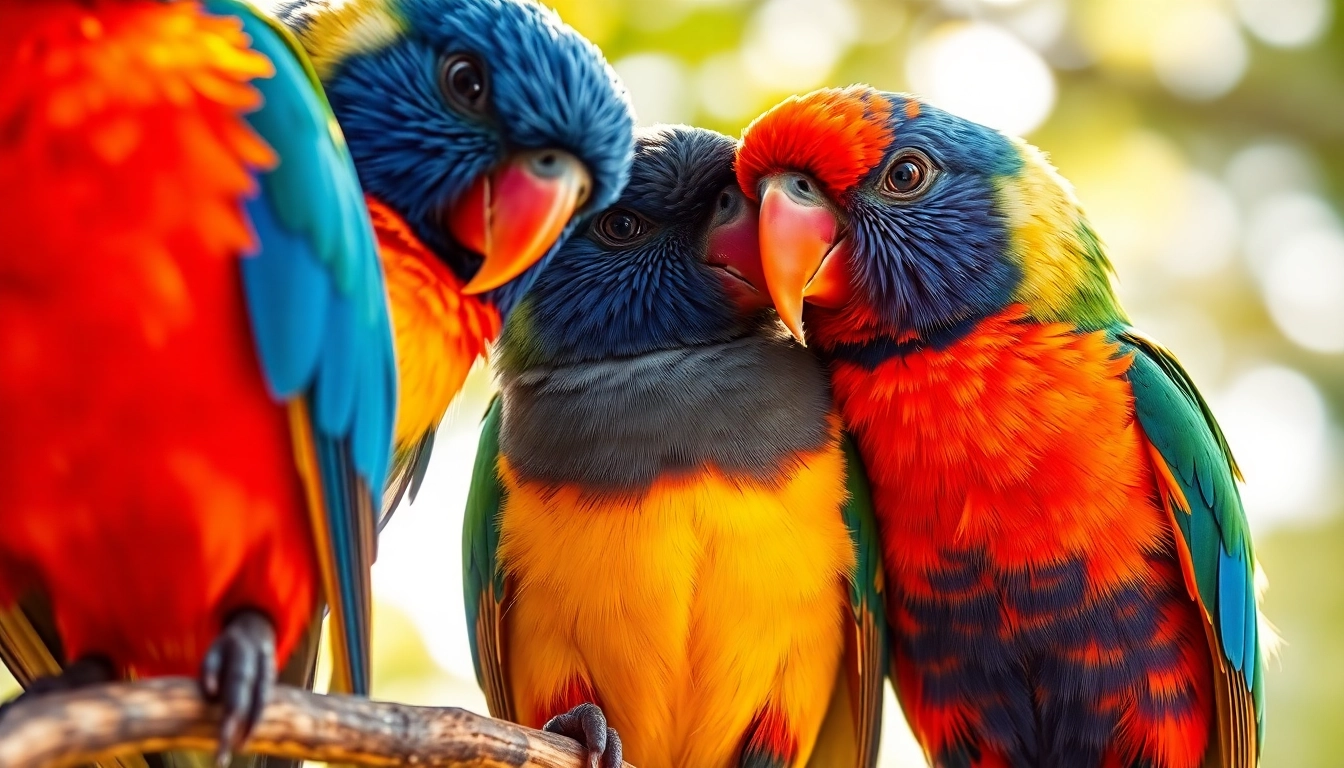
Essential Tips for Caring for Pet Birds and Enhancing Their Well-Being
Understanding Pet Bird Species and Their Unique Needs
Choosing the right pet bird begins with understanding the variety of species available and their individual behaviors. From the colorful and social Budgerigar to the intelligent and inquisitive African Grey, each bird type comes with its own set of care requirements and personality traits. Recognizing these differences enables prospective owners to select a bird that aligns with their lifestyle, experience level, and expectations. For instance, a novice bird owner might find a Cockatiel easier to care for than a more demanding Amazon parrot. Additionally, appreciating individual personality traits—such as a bird’s temperament, level of curiosity, and social tendencies—can help foster a stronger bond and ensure both owner and pet enjoy a harmonious relationship.
Visit our detailed guide on pet birds to explore the various species and how to tailor care to meet their specific needs.
Creating a Safe and Stimulating Environment for Pet Birds
Designing an Optimal Cage Setup and Perch Options
The foundation of good pet bird care lies in providing a cage that is safe, spacious, and enriched with various perches. A well-designed cage should accommodate the bird’s size, giving enough room for movement, flight, and play. Perch diversity is crucial: natural wooden perches of different diameters and textures promote healthy feet and prevent boredom. Elevated perches simulate natural roosting sites, while toys should encourage physical activity and mental stimulation. Regularly rotating toys and perches ensures ongoing interest and prevents behavioral issues stemming from boredom.
Ensuring Safety from Household Hazards
Household environments house numerous potential dangers—Teflon-coated cookware, fumes from cleaning agents, open electrical cords, and toxic plants. Securing these hazards and creating a bird-proofed space is essential. Using cage covers at night, avoiding aerosol sprays near the cage, and ensuring proper ventilation minimizes risk. Educating all household members about bird safety also fosters a protective environment for your pet.
Providing Enrichment Activities and Toys
Enrichment is vital for mental health. Activities like foraging toys, puzzle feeders, and swinging perches replicate natural behaviors and reduce stress. Incorporating natural elements such as vines or non-toxic plants stimulates curiosity. Social interaction, whether with humans or other birds, combined with these activities, ensures your bird remains active, engaged, and content.
Nutrition Essentials for Healthy Pet Birds
Balanced Diet Components and Feeding Routines
Proper nutrition hinges on a balanced diet rich in variety. A typical diet includes high-quality pellet formulations, fresh vegetables, fruits, and occasional seeds. Fresh water should be available at all times. Feeding routines should be consistent—offering small, frequent meals and avoiding sudden diet changes to prevent digestive upset. Tailoring nutrition to specific species ensures optimal health; for example, seed-heavy diets are inadequate for many parrots, necessitating a shift towards fortified pellets and fresh produce.
Warning Signs of Dietary Deficiencies
Monitoring your bird’s health includes recognizing signs of nutritional deficiencies. Common indicators include feather plucking, dull plumage, lethargy, and abnormalities in droppings. Insufficient calcium may cause weak eggshells or metabolic bone disease, while vitamin A deficiency can lead to respiratory issues. Regular veterinary check-ups and a varied diet help mitigate these risks.
Natural Supplements and Treats for Pet Birds
Natural supplements like cuttlebone, mineral blocks, and probiotics support mineral balance and digestive health. Treats such as millet sprays or small bits of fruit can serve as positive reinforcement during training. Always use treats in moderation, ensuring they are appropriate for the species and free from harmful ingredients.
Training and Socializing Pet Birds Effectively
Building Trust Through Positive Reinforcement
Establishing trust is foundational for training and socialization. Positive reinforcement—treats, gentle praise, and patience—encourages birds to behave calmly and cooperate. Short, consistent sessions foster learning without inducing stress. Handling should be gentle and gradual, respecting the bird’s comfort level to build confidence.
Introducing New Environments and Companions
Transitions to new environments or introducing other birds require careful planning. Gradual exposure, familiar scents, and supervised interactions reduce stress and aggression. Consistency and routine help your bird acclimate faster, promoting social harmony and reducing behavioral issues.
Addressing Behavioral Issues and Stress Signs
Common behavioral challenges include biting, screaming, or feather plucking. Identifying stress signs—such as agitation, changes in appetite, or self-mutilation—is critical. Addressing these issues involves environmental enrichment, reducing perceived threats, and seeking expert advice if needed. Providing a safe, stimulating, and predictable environment minimizes stress and promotes healthy behaviors.
Maintaining Long-term Health and Wellbeing of Pet Birds
Regular Veterinary Care and Vaccinations
Routine veterinary visits—preferably annually—are vital. Specialized avian vets assess overall health, perform preventive screenings, and address issues early. Vaccinations against diseases such as polyomavirus or psittacosis are recommended depending on regional risk factors and species.
Monitoring for Signs of Illness or Distress
Early detection of illness is crucial. Changes in droppings, fluffed feathers, lethargy, or changes in vocalizations warrant prompt veterinary consultation. Daily observation helps detect subtle signs and ensures swift intervention, significantly improving health outcomes.
Seasonal Care Tips and Environmental Adjustments
Seasonal changes influence a bird’s needs. During colder months, ensuring adequate heating and humidity levels prevents respiratory issues. In hot environments, providing shade and fresh, cool water is essential. Adjusting lighting for seasonal circadian rhythms supports natural health and behavior patterns.


